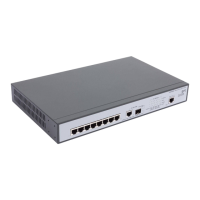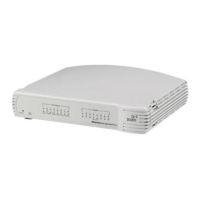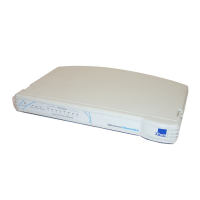Switch Features 231
Configuration File Management The device configuration is stored in a configuration file. The
Configuration file includes both system wide and port specific device
configuration settings. The system can display configuration files in the
form of a collection of CLI commands, which are stored and manipulated
as text files.
DHCP Clients Dynamic Host Client Protocol. DHCP enables additional setup parameters
to be received from a network server upon system startup. DHCP service
is an on-going process.
Domain Name System Domain Name System (DNS) converts user-defined domain names into IP
addresses. Each time a domain name is assigned, the DNS service
translates the name into a numeric IP address. For example,
www.ipexample.com is translated to 192.87.56.2. DNS servers maintain
domain name databases and their corresponding IP addresses.
Edge Port STP can take up to 30-60 seconds to converge. During this time, STP
detects possible loops, allowing time for status changes to propagate and
for relevant devices to respond. 30-60 seconds is considered too long of a
response time for many applications. The Edge Port option bypasses this
delay, and can be used in network topologies where forwarding loops do
not occur.
Full 802.1Q VLAN Tagging Compliance IEEE 802.1Q defines an architecture for virtual bridged LANs, the services
provided in VLANs, and the protocols and algorithms involved in the
provision of these services. An important requirement included in this
standard is the ability to mark frames with a desired Class of Service (CoS)
tag value.
IGMP Snooping IGMP Snooping examines IGMP frame contents, when they are forwarded
by the device from work stations to an upstream Multicast router. From
the frame, the device identifies work stations configured for Multicast
sessions, and which Multicast routers are sending Multicast frames.
LACP LACP uses peer exchanges across links to determine, on an ongoing basis,
the aggregation capability of various links, and continuously provides the
maximum level of aggregation capability achievable between a given pair
of systems. LACP automatically determines, configures, binds and
monitors the port binding within the system.
Link Aggregated Groups The system provides up to four Link Aggregated Groups (LAGs).
Aggregated Links may be defined, each with up to eight member ports,
to form a single LAG. LAGs provide:
■ Fault tolerance protection from physical link disruption
■ Higher bandwidth connections
■ Improved bandwidth granularity
■ High bandwidth server connectivity
■ LAG is composed of ports with the same speed, set to full-duplex
operation.
Table 13 Features of the OfficeConnect Managed Fast Ethernet PoE Switch (continued)
Feature Description

